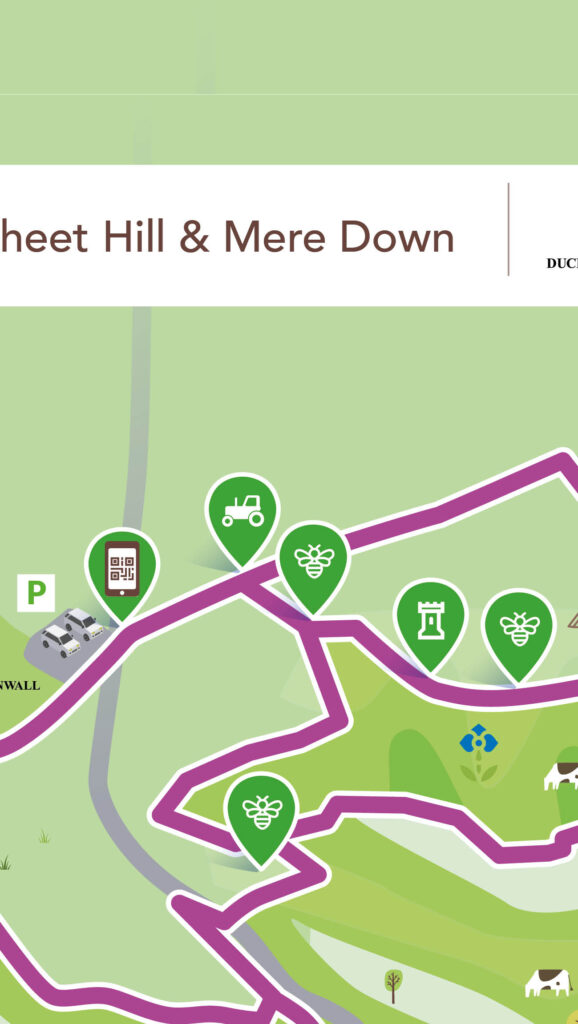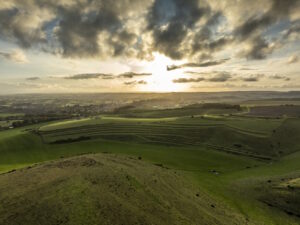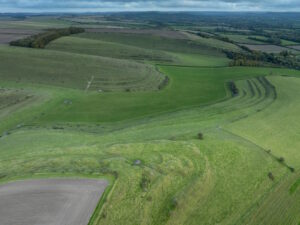
Strip Lynchets
Strip lynchets are archaeological features found in agricultural landscapes, consisting of parallel, stepped terraces on the slopes of hills or inclines. They were important as they allowed the land to be used more efficiently.
What was the purpose of strip lynchets?

Strip Lynchets – photo credit: Charles Sainsbury-Plaice
Ahead of you, you will see terraces on the side of the hill – these are called strip lynchets
Many strip lynchets date back to the medieval period. In the early 14th century, the huge increase in population and the lack of good quality arable land meant peasants had to think creatively.
When were strip lynchets formed?

Strip Lynchets – photo credit: Charles Sainsbury-Plaice
There is evidence of lynchets dating back to the prehistoric period, although these are more angular in shape and much wider than the medieval examples. Little is known about these earlier lynchets, however if these were built for agricultural purposes, they were likely abandoned as people moved towards the more fertile soils of valley areas.
Many lynchets have also been found in areas close to Iron Age forts and Roman earthworks. Some are even associated with barrows from the Neolithic and Bronze Age periods.
Strip lynchets can still be seen here are those likely to have been created towards the end of the medieval period to maximise the land usable for food production. These were created on steep land and are therefore most pronounced. Additionally, when they were abandoned as the population decreased, due to The Black Death, the land was often left unused, meaning their construction was undisturbed.
Countryside Code
Respect everyone
- Leave gates as you find them.
- Do not block access to gateways when parking.
- Be polite to others and share the space.
Protect the environment
- Take your litter away with you – this includes dog poo!
- Keep dogs under control and in sight.
- Care for nature and don’t cause any disturbance.
- Do not light fires or BBQs.